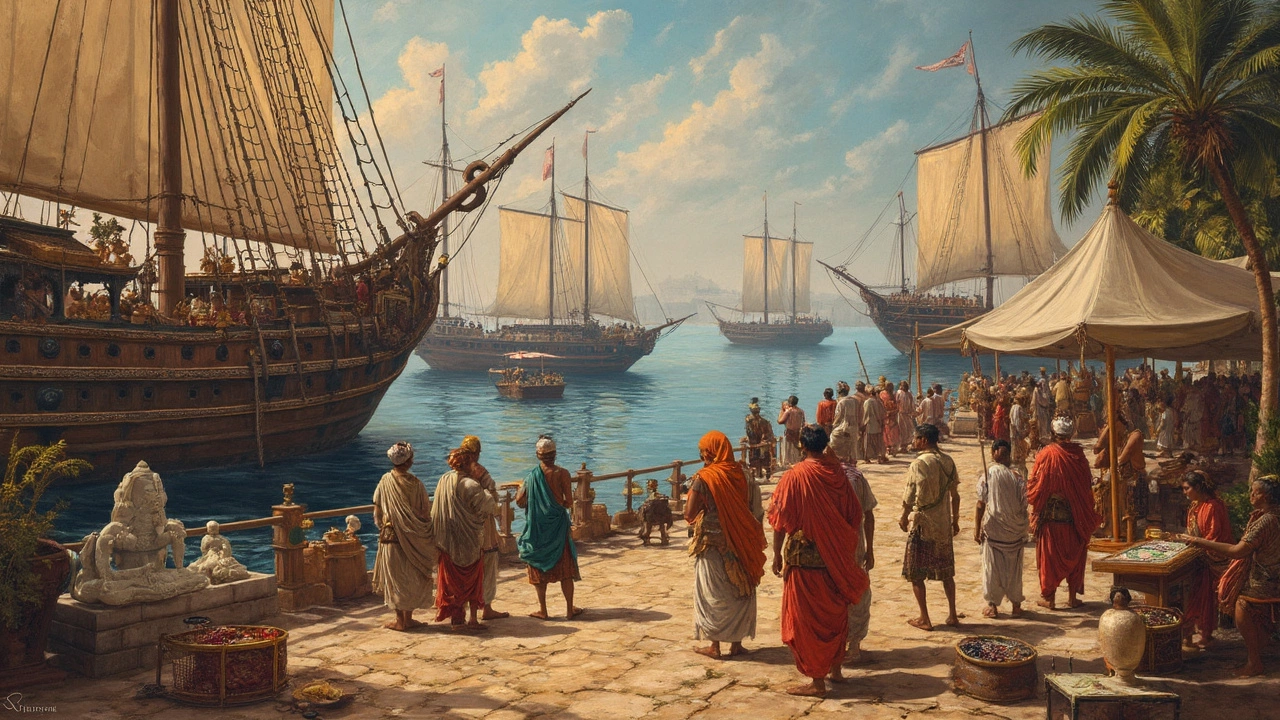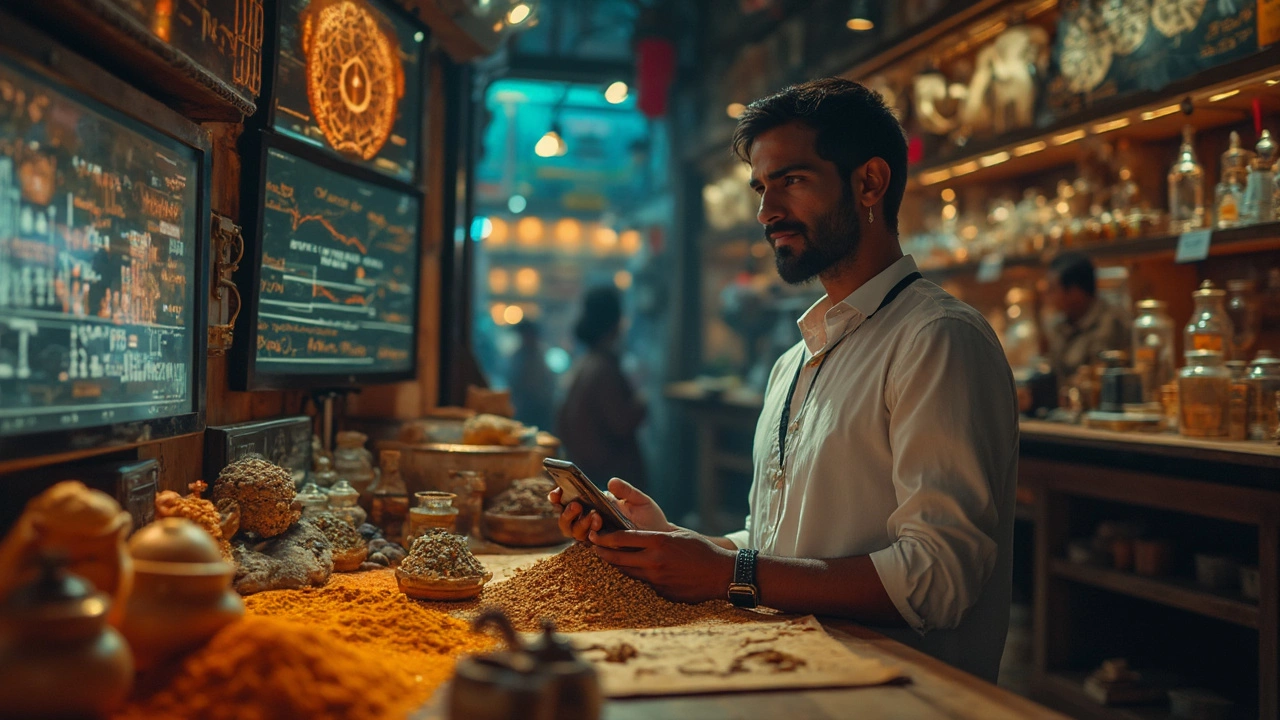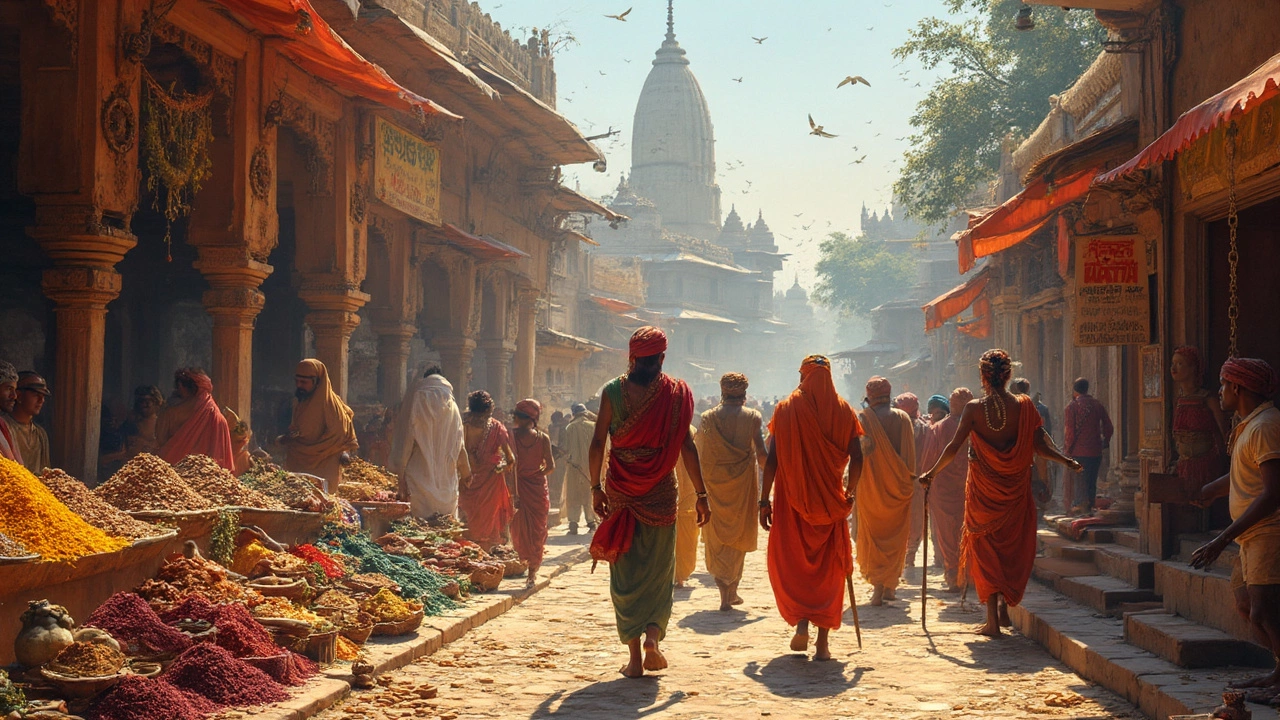Indian markets have always had something special. Even hundreds of years ago, traders from all over Asia, Europe, and the Middle East were obsessed with one thing—getting their hands on Indian spices and goods. It wasn’t just about profits. It was the thrill of discovering items nobody else could offer, from pepper and cinnamon to brilliant cotton textiles.
Imagine you were a trader in Europe or Arabia. Indian spices could turn a basic meal into something mouthwatering and fresh fabrics could take the local fashion scene to another level. No wonder people risked long, dangerous journeys through oceans and deserts just to strike a deal in India. These trade missions weren’t simple shopping trips—they changed what people ate, wore, and even how they did business for centuries.
If you’re thinking about a future in trade or just curious how ancient routes shaped today’s market skills, understanding why everyone wanted a piece of India is a pretty good place to start.
- Spices: The Real Gold Rush
- Textiles and Crafts: Not Just Pretty Stuff
- Ports, Routes, and Smart Locations
- Cultural Mix and Marketplace Buzz
- Modern Lessons from Ancient Trading
Spices: The Real Gold Rush
When people say "India trade," the first thing that often pops up is spices. We're talking about black pepper, cardamom, cinnamon, cloves, and nutmeg. These weren’t just for making food taste better. Back in the day, spices from India were almost worth their weight in gold in Europe and Asia. In the first century AD, Roman ships carried over 120 tons of Indian pepper a year. Not jumbo containers—actual wooden ships braving the Indian Ocean, loaded to the brim.
Europeans didn’t have much access to refrigeration, so spices helped preserve food and covered up weird tastes. These magic ingredients were also used as medicine, perfume, and even to pay taxes. No kidding, in some parts of Europe, pepper was so valuable that it was called “black gold.” The demand shot through the roof, and traders had no choice but to look for direct sea routes to India—this is what led to global trade routes that changed history.
Here’s a quick look at which spices were the top favorites:
- Black pepper: Known as the "king of spices," it was the top export from Malabar (in today’s Kerala).
- Cardamom and cloves: Sought for both cooking and traditional medicine.
- Cinnamon: Used by rich folks everywhere from ancient Egypt to Imperial Rome.
How big was the Indian spice trade? Check out these numbers:
| Spice | Main Export Ports | Estimated Medieval Value |
|---|---|---|
| Pepper | Cochin, Calicut | Up to 20 times its weight in silver |
| Cinnamon | Southern ports | 10 times the local price in Europe |
| Cardamom | Malabar Coast | Luxury good in Middle East |
So, next time you grind pepper on your food, remember it’s not just any seasoning—it’s what first turned India trade into a worldwide obsession. The intensity of this ancient spice rush left deep footprints, shaping tastes, trade routes, and even the global economy.
Textiles and Crafts: Not Just Pretty Stuff
It’s no exaggeration to say that India’s textile industry turned it into the Amazon of the ancient world. Long before digital shopping, traders sailed in with one thing on their wishlist: Indian cotton, silk, and dyed fabrics. The stuff was everywhere—from the markets of Rome to distant parts of Africa. And people absolutely loved it because nowhere else could match India’s colors, patterns, or smoothness.
Indian craftsmen weren’t just producing clothes; they were setting trends. The famous muslin from Bengal was so light and fine that poets called it “woven air.” King Tutankhamun’s tomb in Egypt even had Indian cotton inside—it traveled that far back, over 3,000 years ago! These textiles weren’t luxury for royals only; bulk orders of cotton cloth—think Gujarat’s iconic printed patterns—were snapped up by everyday folks in West Asia and Africa.
Look at this data from the 17th century:
| Exported Item | Main Destinations | Value (in tons/year) |
|---|---|---|
| Cotton textiles | Europe, Southeast Asia, East Africa | 7,000 |
| Silk fabrics | Persia, China, Ottoman Empire | 800 |
| Dyes & crafts | Middle East, Europe | 2,500 |
But it didn’t stop with fabric. Indian artisans were famous for their metal and stone work—everything from delicate jewelry to game-changing tools. Brassware from Kerala, inlaid woodcraft from Rajasthan, and Bidriware from Hyderabad kept traders coming back. These goods weren’t just pretty; they drove serious demand in global India trade markets.
Tip: If you plan to get into trade (especially with an India trade focus), don’t ignore the power of unique, high-quality products. That’s what made Indian goods stand out for centuries—originality, quality, and knowing exactly what the customer wanted.

Ports, Routes, and Smart Locations
India’s coastline stretches about 7,500 kilometers, offering natural spots for ports way before most places even thought about building them. Big names like Calicut (now Kozhikode), Surat, Muziris (in Kerala), and Lothal (in present-day Gujarat) turned into bustling gateways for trade with the world. Goods zipped in and out by sea, and these ports became famous for not just spices but also textiles, gems, and a bunch of other stuff.
Why did traders pick India? Geography, plain and simple. With access to the Arabian Sea and the Bay of Bengal, India connected east to west. Traders sailing from Arabia, Africa, or even Rome could dock at Indian ports way easier than anywhere else around the Indian Ocean. The spice trade was so big that Roman coins are still dug up in southern India today—proof those trade routes had heavy traffic.
And it wasn’t just sea trade. India nailed overland trading, too. Think Silk Road. Indian merchants and foreign caravans crossed deserts and mountains through Gujarat and the northwest, linking with Persian and Central Asian markets. Everything from horses to silk and precious stones moved along these busy land routes.
- Muziris: The main port for Roman and Egyptian ships—mentioned in plenty of ancient texts.
- Lothal: One of the world’s oldest known dockyards, super-active during the Harappan era (over 4,000 years ago).
- Calicut: Hit peak fame around the 14th century, especially for the spice trade with Arabs and later the Portuguese.
- Surat: The top port during the Mughal period, crucial for both European and Middle Eastern trade.
Here’s a quick snapshot of how routes connected India to the world:
| Route | Connected Regions | Main Goods |
|---|---|---|
| Sea Route (Muziris–Alexandria) | South India–Egypt/Rome | Spices, textiles, gems |
| Land Route (Silk Road) | Northwest India–Central Asia–Europe | Silk, horses, precious stones |
| Arabian Peninsula Sea Route | West India–Arabia/Africa | Spices, cotton, incense |
If you’re looking to pick up skills or inspiration for modern India trade or want to learn from pros, it makes sense to look at why these locations worked so well. It’s all about finding that sweet spot—where you’re close to supply, have clear access to buyers, and use every route you can.
Cultural Mix and Marketplace Buzz
If you think modern malls are busy, ancient Indian markets would blow your mind. India’s spot on the map turned it into a magnet for traders from China, Arabia, Africa, and even Europe. Places like the port of Muziris and the city of Surat were packed with Persians, Egyptians, Greeks, Romans, Chinese—basically anyone who wanted to buy or sell something cool. It wasn’t just trade; it was a mashup of languages, food, money, and new ideas.
This cultural blend actually made the markets work better. For example, if a Roman wanted fine cotton, there was always a local fixer or translator to help make the deal happen. These human connections were as important as the India trade goods themselves. Indian business folks got super flexible, picking up negotiation styles, weights and measures, even numbers from all these different visitors.
If you’re curious about numbers, here’s a quick look:
| Port/Market | Main Foreign Traders | Hot Goods |
|---|---|---|
| Muziris (Kerala) | Romans, Arabs | Spices, gems, pearls |
| Surat (Gujarat) | Persians, Portuguese | Textiles, gold, indigo |
| Kolkata (Bengal) | Chinese, Dutch | Silk, saltpeter |
The competition in these buzzing markets was fierce but healthy. Traders had to learn some words in different languages and get smart about the latest market trends. They swapped not just products but also stories, recipes, tech tricks, and trading hacks.
If you see flashy, cosmopolitan trade hubs today—like Dubai or Singapore—India’s historic markets were basically the blueprint. The real lesson: in a mixed marketplace, the more open you are to learning from others, the better trades you’ll make.

Modern Lessons from Ancient Trading
Looking at how traders were drawn to India gives us a solid playbook for today's business world. The old timers weren’t just after pepper or colorful silk. They mastered relationship-building, knew how to spot demand, and understood the power of reliable supply chains. If you plan to dive into India trade today—maybe through a course, an import-export venture, or even investing—those same skills matter big time.
Let’s get specific. Ancient merchants were obsessed with quality. Pepper from Kerala, for example, got a premium in Europe because everyone knew where the good stuff came from. Today, branding and quality consistency still decide if you score loyal customers or tumble into obscurity. Also, old traders always hedged their bets—if a monsoon ruined crops in the South, they had connections elsewhere. Building strong networks and backup plans is just as important now, especially in supply chain management.
Trading routes, both then and now, are about timing. If you were late docking at Calicut, your competition grabbed the best deals. These days, being quick on trends or market shifts—whether that's in textiles, spices, or tech—makes all the difference.
- Know your product's story: The legends around Indian spices and textiles gave them an edge. Learn how to sell the story, not just the stuff.
- Build relationships: Old-time trade was face-to-face and built on trust. Even in a digital age, connections, reviews, and reliability matter.
- Stay curious about the market: Ancient traders always scouted for new demands and exotic goods. Keep your research game strong.
- Stay flexible and ready to adapt: The routes kept changing due to wars or new ports. Be prepared to pivot your business approach fast.
Want a quick stat? According to a 2023 report from India’s Ministry of Commerce, the export value of Indian spices hit a record $4.2 billion. That hunger for Indian goods is still going strong. Dive into trade courses India offers, and you’ll see a heavy focus on case studies from this wild early trade history. The past isn’t just for history nerds—it’s real-world fuel for smart traders today.

